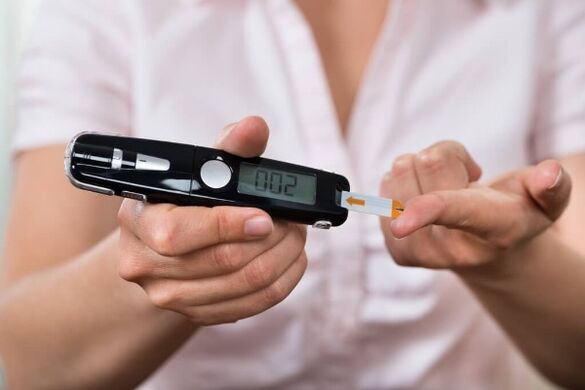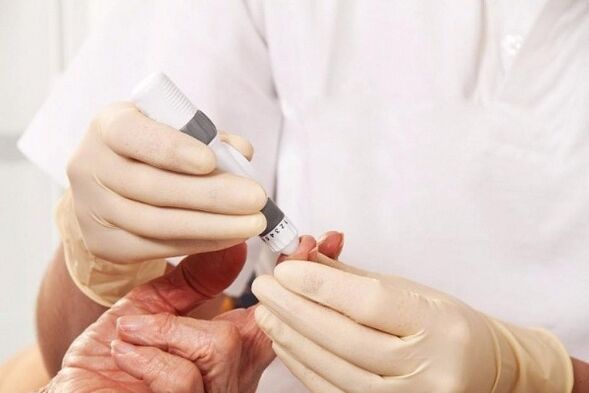According to statistics, in recent years, humanity has often encountered diabetes, which is an epidemic of the 21st century. Yeardo year the disease is becoming younger, and more and more patients die of complications. In this regard, it is important to understand what diabetes mellitus are, what types of diabetes exist and their differences.

Types of diabetes
Diabetic pathology is a collective name for a whole class of diseases. In medicine, it is common to release diabetes mellitus by type. The terminology itself is represented by a whole list of diseases that have common characteristics. The characteristics of diabetes and species are due to the pathogenic value of glucose in the bloodstream.
There are many factors, this is why insulin is unable to give glucose to blood cells, while the result is always the only one - during the course of strong blood saturation from sugar, the cells are unable to eat normally.
When sugar in the cells is inappropriate, it is pulled out of the water. The fluid that fills the blood passes through the kidneys, leading to dehydration. Regardless of the type of sugar disease is observed, the following signs develop:
Different forms of diabetes are characterized by factors of appearance, symptoms and methods of therapy.

Diabetes classification
How many types of diabetes sugar exist? First of all, diabetes is distinguished by the type - sugar coupled with an increase in sugar and not -Har. And already the type of sugar has certain types of diabetes and their changes.
In terms of severity, diabetes is distinguished by type:
As for the compensation state, they distinguish:
It is important to consider each type of diabetes and their characteristics.
Type 1 diabetes (insulin dependent)
The first type of diabetes is commonly referred to as autoimmune or viral damage to the pancreas that produces insulin. In patients with 1 type of diabetes, insulin is missing or not enough.
According to statistics, the manifestation of the disease is today in young people. The first form has the following signs:
Treating this variety of pathology implies the introduction of the necessary dose of the hormone. The remaining therapeutic measures are ineffective.
The development of the first type of disease occurs due to a genetic factor. Moreover, the provocateur is a number of negative reasons, ranging from damaged immunity. The course of diabetes is unexpected, with pronounced manifestations. The sugar indicator is quite high, reaches 30 mmol/l. But without insulin, the cells remain in a state of hunger.

Pancreatic cells are deformed, sugar produced. Lack of hormone leads to the inability to use carbohydrates, lack of energy tries to constitute fat processing.
The first type develops in the presence of:
In the absence of adequate treatment, consciousness disputes, up to a state of diabetic coma, are developing rapidly. Then, if you do not comprehend diabetes in adults, then it will quickly lead to a disorder of almost all systems and organs, disability.
With the development of the disease in a child, there is a developmental delay at the physical, mental level, subsequent puberty, infantilism.
The only method of therapy is to introduce insulin into injections under the epithelium. Today, glucose is not presented many times. There are analogs presented once a day or 1 time for 3 days. Insulin pump is effective, which presents glucose constantly during the day.

A variety of 1 form of the disease is an autoimmune latent disease of adults, characterized by a decrease in sugar value, the patient's body weight is normal. In the study, antibodies are found in pancreatic cells that are not available in the 2nd form of pathology, but in 1 form.
It is important to diagnose the disease in time, as therapy implies the introduction of insulin. Tablets, to reduce sugar in this situation are not allowed.
Type 2 diabetes (insulin dependent)
2nd degree diabetes is not absolute, but in relation to the inferiority of the insulin. This indicates the secretion of insulin into a normal, excessive volume. Cells are resistant to its influence.
There are times when this species is accompanied by overweight. In such a position of glucose secretion, it is not enough for all current fat deposits. Unlike 1 form, 2 species are formed in mature years. The male gender faces a problem after 40, the female in the post -Climax period, when the restructuring is observed at a hormonal level.
The development of 2 forms of diabetes is not that fast, compared to 1 type. Often the disease is gradually formed, signs are weak, painful disorders are not as much as in 1 form.

The main manifestations of the disease include:
After the disease, along with overweight, leads to the development of a hypertensional disease, increasing pressure on high values. The formation of a wicked circle is formed when diabetes, overweight and hypertension together lead to the loading of each other. The risk of heart attack, stroke is growing rapidly.
If the disease is not treated, irreversible phenomena occur in nerve fibers, liver, kidneys, eye retina. Most often, vascular disease in 2 form leads to complications - the appearance of trophic ulcers in the lower leg, gangrene legs.
When the 2 SD species continue easily to normalize sugar, bitter pounds are enough. This is only initially. After lack of glucose, it will require medicines that lower sugar in tablets. The pill can stimulate sugar synthesis in beta cells, which covers its absence.

But then with multiple stimulation, complete impoverishment of cells, the formation of a complete lack of glucose is possible. High indicators, along with complications related to internal organs, serve as an indicator to move from insulin pills. Therefore, as a rule, the patient is convicted of continuous use of insulin. So, out of the 2 types of diabetes, 1 is dependent on insulin, and the 2nd form has 2 stages, the nature of development is insulin dependent and insulin dependent.
Specific types of diabetes
There are a whole set of specific types of diabetes associated with other factors. Types of Diabetes:
Diabetes mellitus from the types of genetic defects in the work of the pancreas and the effects of insulin is formed due to the gene mutation responsible for the functioning of the gland, the effect of insulin.
Diseases of the exocrine part of the pancreas mean an inflammatory process in iron, damage, tumor formations. When a part of the organ is affected, sugar productivity also suffers, the service station leads to the emergence of diabetes. Therapy is subject to a replacement of work, present glucose.

Diabetes mellitus by type of endocrinotherapy is characterized by the performance of the hormones in excess volume. Hormones are able to adversely affect the sugar exchange by increasing the indicator, provoking insulin resistance, prevent exposure to sugar. As a result, the development of a specific form of diabetes occurs.
Diabetes mellitus by species provoked by medicines capable of increasing sugar and cause insulin resistance.
Often, diabetes initially develops after viral pathologies, as viruses can affect pancreatic cells amazing and provoke damage to the immune system, starting a process that is similar to the formation of sugar disease.
In rare cases, diabetes is observed with diabetes, provoked by the formation of antibodies to glucose and its receptor. The receptor is the purpose of glucose, through it the cell receives its influence. When these phenomena are violated, sugar is unable to do its job naturally, so it develops diabetes.

Gestational
This species develops during pregnancy. The disease develops due to inferior sugar productivity, it is necessary to regulate blood flow glucose.
During pregnancy, the female body is forced to produce a large amount of sugar, which provides the need for the baby. This process is especially important in the second phase of pregnancy.
When there is a lack of glucose, the value of sugar is increasing all the time, ensuring the possibility of forming a gestational type of diabetes. The pathology often disappears on its own, after the birth of a baby. This is a characteristic feature that distinguishes this type from other species that have a chronic flow.
Diabetes not -adalar
The non -nenaic form of the disease is also called urethics. Pathology has no typical signs. The main features include:

With a disease, diabetics observe:
Nonachard therapy predicts taking vasopressin in the form of a spray in the nasal cavity, or pill.

























